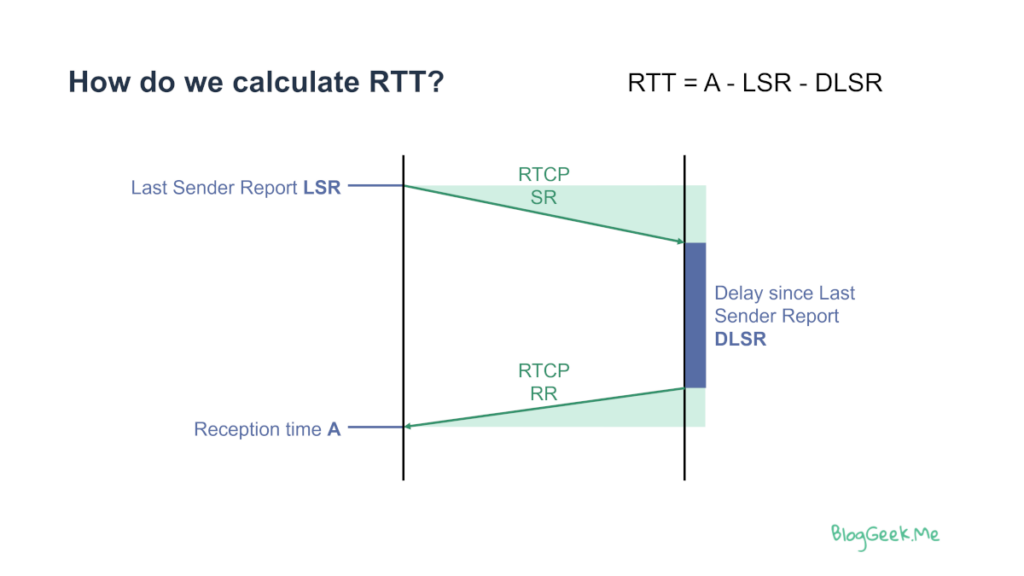RTT stands for Round Trip Time.
Round Trip is the process of sending a message from one peer to another – and back.
Round Trip Time is the time it takes from the moment a request is sent over the network until a response is received.
The lower the RTT the higher the perceived quality of real time interactive media will be.
Round trip time can be calculated in may ways. One of the ways this is done is by way of RTCP messages:

Here, the left hand side user sends out an RTCP SR message. In it, he places the LSR field indicating the time of sending this message.
The receiver then measures the time it took from receiving this RTCP SR message until sending out an RTCP RR message (asynchronously to the message he received). In this RTCP RR message, he places both the LSR and the DLSR fields (DLSR is the time it took between receiving the RTCP SR message to sending out the RTCP RR message).
Now, the originator of this procedure can calculate the RTT by measuring the time from sending the RTCP SR to receiving the RTCP RR (denoted as A) and then subtracting from that the DSLR value. What is left, is the round trip time.
This specific technique doesn’t assume the clocks of either machines is synchronized.


